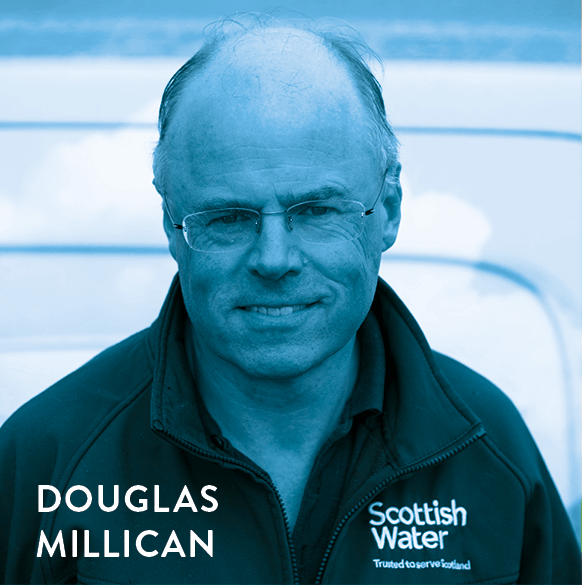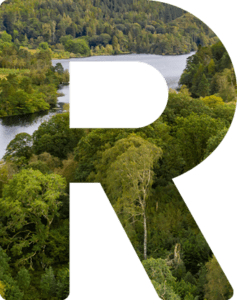We are responsible for providing water and waste water services that are essential to everyday life for households and businesses across Scotland; making a critical contribution to the country’s health, wellbeing, economic prosperity and natural environment.
But the changing climate will increasingly threaten our ability to deliver these services. We must therefore adapt our approaches, deal with the climate challenges, and secure the future reliability and sustainability of the country’s water and waste water services.
While we must adapt our services to deal with climate change, we must also eliminate the greenhouse gas emissions that are contributing to the climate emergency.

“While we must adapt our services to deal with climate change, we must also eliminate the greenhouse gas emissions that are contributing to the climate emergency.”

We have already made good progress in reducing emissions through energy efficiency and generating renewable power, but we must go much further to become net zero by 2040, and beyond that thereafter.
The scale of change ahead is nothing short of transformational. In our Strategic Plan, ‘A Sustainable Future Together’,
I highlighted that Victorian pioneers created the water industry in order to transform the health of the people of Scotland.
Over the next 25 years, we will need to undergo another transformation in the face of a changing climate.

“Over the next 25 years, we will need to undergo another transformation in the face of a changing climate.”
This is a big challenge because we have a substantial emissions footprint. We consume large amounts of electricity and chemicals to deliver our services, and generate emissions from the wastewater we treat and through our large capital investment programme.
In the Programme for Government 2019, we committed to producing a routemap to take us to net zero emissions by 2040. Developed in conjunction with our Expert Advisory Panel and stakeholders, this routemap sets out how we will lead our industry to create a greater contribution to Scotland’s emissions ambition than simply addressing our own footprint.
If we use current accepted carbon accounting practices, it would be relatively straightforward to achieve net zero emissions over the next 20 years. We would look only at operational emissions in our direct control and would overlook activities associated with our capital investment programme, whose emissions are attributed to the supply chain.
With this in mind, we could seek to achieve net zero emissions through reducing our operational emissions and working to provide our electricity through developing further renewable energy on our land.
However, this would completely miss the point. Climate change is an existential threat to the wellbeing of future generations. Pursuing net zero emissions is not primarily about meeting a target, but rather doing everything possible to minimise the emissions associated with our activities and maximising the positive contribution we can make, irrespective of which party accounts for the emissions.
This is why our routemap looks beyond those operational emissions immediately under our control to include all emissions associated with our activities, wherever they are generated.

“This is not primarily about meeting a target. Rather, pursuing net zero emissions is about doing everything possible to minimise the emissions associated with our activities and maximising the contribution we can make.”
It highlights how we will work to positively generate renewable energy and store away unavoidable emissions, irrespective of where the emissions benefits are accrued; it outlines what we will do to decarbonise our activities as quickly as possible, while continuing to deliver an excellent service to our customers; and it shows how we will break the issue down into what we can control, what we can influence and what technologies we can hopefully adopt.
We will learn as we go, innovating, piloting, discovering what works well and can be scaled economically, and what works less well. To maximise our positive contribution to Scotland’s emissions imperative, we do not have enough time to perfect each idea. Instead we will look to continually improve and refine as we progress, mindful of the consequences of our choices.
Each year we will review our progress and update the routemap.

Our greatest responsibility is to manage Scotland’s public water and waste water systems, providing our customers with reliable and resilient services.
But we must do this in a way that is truly sustainable; and that is why we commit to this routemap as we play our part in supporting a flourishing Scotland.
Scottish Water has established a framework for the supply of sustainably sourced hydrotreated vegetable oil that can be used by both Scottish Water and its construction partners. It’s a drop in fuel replacement that reduces emissions by 90% compared to conventional diesel.
Over the last year it has been widely adopted by our construction partners, displacing diesel use in excavators, cranes and other heavy plant. It is also being used to fuel generators to provide power for remote construction sites.
On our water mains rehabilitation programme its adoption is expected to reduce emissions by nearly 30%.